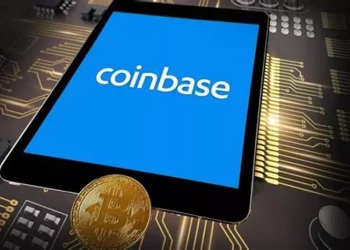Binance, one of the world’s largest cryptocurrency exchanges, is widely known for its vast selection of digital assets, user-friendly interface, and robust security features. However, like most cryptocurrency exchanges, Binance charges withdrawal fees when users wish to transfer their digital assets from the platform to an external wallet. Understanding these withdrawal fees is essential for users to effectively manage their funds and avoid unnecessary costs.
In this article, we will provide a comprehensive breakdown of the withdrawal fees associated with Binance. We will explore the factors that influence these fees, the various types of withdrawals available, and how to minimize costs when withdrawing cryptocurrency from Binance.
What Are Binance Withdrawal Fees?
Withdrawal fees are charges that users must pay when transferring their cryptocurrencies from an exchange like Binance to an external wallet. These fees vary depending on the type of cryptocurrency being withdrawn, the amount, and the method of transfer. Binance, like other exchanges, sets withdrawal fees to cover the network transaction costs required to move assets off the platform.
While Binance aims to keep these fees as low as possible, they can vary based on several factors, including network congestion, the specific cryptocurrency being withdrawn, and the withdrawal method chosen by the user. In this article, we will focus on Binance’s withdrawal fees for different cryptocurrencies and how they may change over time.
Types of Withdrawals on Binance
Before diving into specific fees, it’s important to understand the different types of withdrawals available on Binance. The platform offers two primary withdrawal methods:
Cryptocurrency Withdrawals: Users can withdraw cryptocurrencies to an external wallet address. The withdrawal fee depends on the specific cryptocurrency, as each coin or token has its own network and transaction costs.
Fiat Withdrawals: Binance also allows users to withdraw fiat currencies (such as USD, EUR, etc.) to their bank accounts or other payment providers. The withdrawal fee for fiat transactions can vary depending on the withdrawal method, such as bank transfer or credit/debit card.
Each of these methods comes with different costs, and understanding the fees involved is essential for optimizing your withdrawal process.
Binance Cryptocurrency Withdrawal Fees
Binance offers a wide range of cryptocurrencies, and the withdrawal fees associated with each of them can differ significantly. Some cryptocurrencies, like Bitcoin and Ethereum, have higher transaction fees due to their network congestion and demand, while others, like Binance Coin (BNB) or stablecoins, typically have lower fees.
1. Bitcoin (BTC) Withdrawal Fee
Bitcoin, being the most well-known and widely used cryptocurrency, has a relatively high withdrawal fee on Binance. The Bitcoin network experiences significant transaction volume, which often leads to higher gas fees (the fee required to process and confirm a Bitcoin transaction).
Withdrawal Fee for BTC: As of now, the standard withdrawal fee for Bitcoin is 0.0005 BTC per transaction. This fee can fluctuate depending on network conditions, such as congestion or changes in the Bitcoin network’s transaction cost structure.
Users withdrawing large amounts of Bitcoin may find this fee to be quite substantial, especially if the network is experiencing high traffic. However, it’s important to note that Binance’s fee structure is relatively competitive compared to other exchanges, where Bitcoin withdrawal fees can be much higher.
2. Ethereum (ETH) Withdrawal Fee
Ethereum is another popular cryptocurrency with higher withdrawal fees, largely due to its network’s scalability issues and transaction costs. Similar to Bitcoin, Ethereum’s network often experiences high congestion, leading to increased gas fees.
Withdrawal Fee for ETH: The withdrawal fee for Ethereum is typically around 0.005 ETH per transaction. This fee is also subject to change depending on the state of the Ethereum network, particularly during times of high activity or congestion.
Ethereum users should be mindful of gas fees, especially during periods of network congestion, as they can make withdrawing ETH quite costly. However, the Ethereum network is undergoing upgrades to improve scalability, which may help reduce transaction fees in the future.
3. Binance Coin (BNB) Withdrawal Fee
Binance Coin (BNB), the native cryptocurrency of the Binance exchange, has relatively low withdrawal fees compared to Bitcoin and Ethereum. This is because Binance has designed BNB to be a utility token that helps lower transaction costs for users on the platform.
Withdrawal Fee for BNB: The withdrawal fee for Binance Coin is generally 0.1 BNB per transaction. BNB transactions are processed on the Binance Chain, which is optimized for fast and low-cost transfers.
BNB is an attractive option for Binance users who want to minimize withdrawal fees. Additionally, Binance offers users the option to pay trading fees in BNB, which can result in further cost savings.
4. Stablecoins (USDT, USDC, BUSD)
Stablecoins like Tether (USDT), USD Coin (USDC), and Binance USD (BUSD) are widely used for trading and transfers due to their price stability, which is pegged to fiat currencies like the US dollar. These coins often have lower withdrawal fees compared to Bitcoin and Ethereum, making them an attractive option for transferring value.
Withdrawal Fee for USDT (ERC-20): Typically 5 USDT per transaction. This is for USDT on the Ethereum blockchain, which tends to have higher gas fees compared to other blockchains.
Withdrawal Fee for USDT (TRC-20): 1 USDT per transaction. When using the TRC-20 token standard on the Tron network, users can take advantage of lower transaction fees and faster confirmation times.
Withdrawal Fee for USDC and BUSD: The withdrawal fees for USDC and BUSD tend to be 0.1 USDC or 0.1 BUSD per transaction, depending on the network and conditions.
For users looking to minimize fees, stablecoins on faster blockchains such as TRC-20 or Binance Chain are often the most cost-effective withdrawal options.
5. Litecoin (LTC), Bitcoin Cash (BCH), and Other Cryptocurrencies
Binance supports a wide variety of cryptocurrencies, and withdrawal fees for less popular coins like Litecoin (LTC) or Bitcoin Cash (BCH) can vary. Generally, withdrawal fees for these coins are lower than Bitcoin or Ethereum, but they depend on the network’s current transaction costs.
Withdrawal Fee for LTC: Typically around 0.001 LTC per transaction.
Withdrawal Fee for BCH: Around 0.001 BCH per transaction.
Other cryptocurrencies supported by Binance, such as Ripple (XRP), Cardano (ADA), and Polkadot (DOT), will have their own network-specific fees. Always check the current withdrawal fees listed on Binance for the most accurate information.
Factors Affecting Binance Withdrawal Fees
The withdrawal fees for cryptocurrencies on Binance are influenced by several factors, including:
Network Congestion: When a cryptocurrency network is congested, transaction fees tend to rise. For example, during periods of high demand, Bitcoin and Ethereum network fees can increase substantially. This is why the fees associated with these cryptocurrencies can fluctuate.
Withdrawal Method: Different cryptocurrencies have different blockchains and transaction methods. For instance, withdrawing Bitcoin will require processing on the Bitcoin blockchain, while withdrawing Tether (USDT) on the TRC-20 network will incur lower fees than the Ethereum-based ERC-20 version.
Withdrawal Volume: In some cases, the withdrawal fee may be influenced by the amount being withdrawn. Larger withdrawals may incur slightly higher fees to account for additional processing or security measures.
Binance’s Fee Adjustments: Binance adjusts its fees from time to time to reflect changes in the market or network conditions. For example, if Bitcoin’s network becomes congested, Binance may increase its Bitcoin withdrawal fee to account for the higher costs associated with processing transactions.
How to Minimize Binance Withdrawal Fees
While withdrawal fees are often unavoidable, there are several strategies you can employ to minimize costs:
1. Use Binance Coin (BNB)
One of the most effective ways to reduce withdrawal fees on Binance is by using Binance Coin (BNB). By holding BNB in your Binance account, you can pay for your withdrawal fees with BNB instead of the cryptocurrency you are withdrawing. Binance offers a discount on withdrawal fees when you choose to pay with BNB, which can save you a considerable amount of money over time.
2. Choose Low-Fee Cryptocurrencies
If you are looking to transfer funds from Binance with the lowest possible withdrawal fee, consider using cryptocurrencies that are known for having low transaction costs, such as stablecoins on the Binance Chain or the Tron network. Stablecoins like USDC, USDT (TRC-20), and BUSD are often much cheaper to withdraw than Bitcoin or Ethereum.
3. Monitor Network Conditions
Pay attention to the current state of the cryptocurrency networks. If a network is experiencing congestion, it may be more expensive to withdraw certain assets. If possible, consider waiting for less busy times to execute your withdrawal, when transaction fees may be lower.
4. Withdraw Larger Amounts Less Frequently
Another way to reduce withdrawal costs is to consolidate your withdrawals. By withdrawing larger amounts less frequently, you can avoid paying multiple smaller withdrawal fees. This is particularly useful if you are withdrawing multiple cryptocurrencies, as it allows you to minimize transaction fees over time.
Binance Fiat Withdrawal Fees
In addition to cryptocurrency withdrawals, Binance also allows users to withdraw fiat currency to their bank accounts. The fees associated with fiat withdrawals depend on the withdrawal method chosen. Binance supports a variety of fiat withdrawal options, including bank transfers and payments via services like Advcash, PayPal, and more.
1. Bank Transfer (SEPA, SWIFT, etc.)
For users in regions like the EU, Binance offers SEPA (Single Euro Payments Area) withdrawals with low fees. For users in the United States or other countries, bank withdrawals are typically conducted via SWIFT and may incur higher fees.
SEPA Withdrawal Fee: Generally around €0.80 per transaction.
SWIFT Withdrawal Fee: Typically ranges from $15 to $50, depending on the bank and location.
2. PayPal and Other Payment Providers
Binance also supports withdrawals through third-party services like PayPal. These services may have higher fees compared to bank transfers, but they offer faster processing times.
3. Credit/Debit Card Withdrawals
For users who wish to withdraw funds to a credit or debit card, Binance charges a fee of around 1% to 2% of the total withdrawal amount, depending on the card type and location.
Conclusion
Binance withdrawal fees can vary depending on several factors, including the type of cryptocurrency, the withdrawal method, and network conditions. While the exchange strives to keep fees competitive, they are subject to change based on market conditions, network congestion, and other factors. Understanding these fees and the different withdrawal options available can help users make more informed decisions and minimize costs.
By leveraging strategies such as using Binance Coin (BNB) to pay for fees, choosing low-fee cryptocurrencies, and consolidating withdrawals, Binance users can reduce their overall withdrawal expenses. As cryptocurrency adoption continues to grow, it is likely that withdrawal fees will evolve, with Binance potentially introducing new features and options to further enhance the user experience.
Related topics:

















